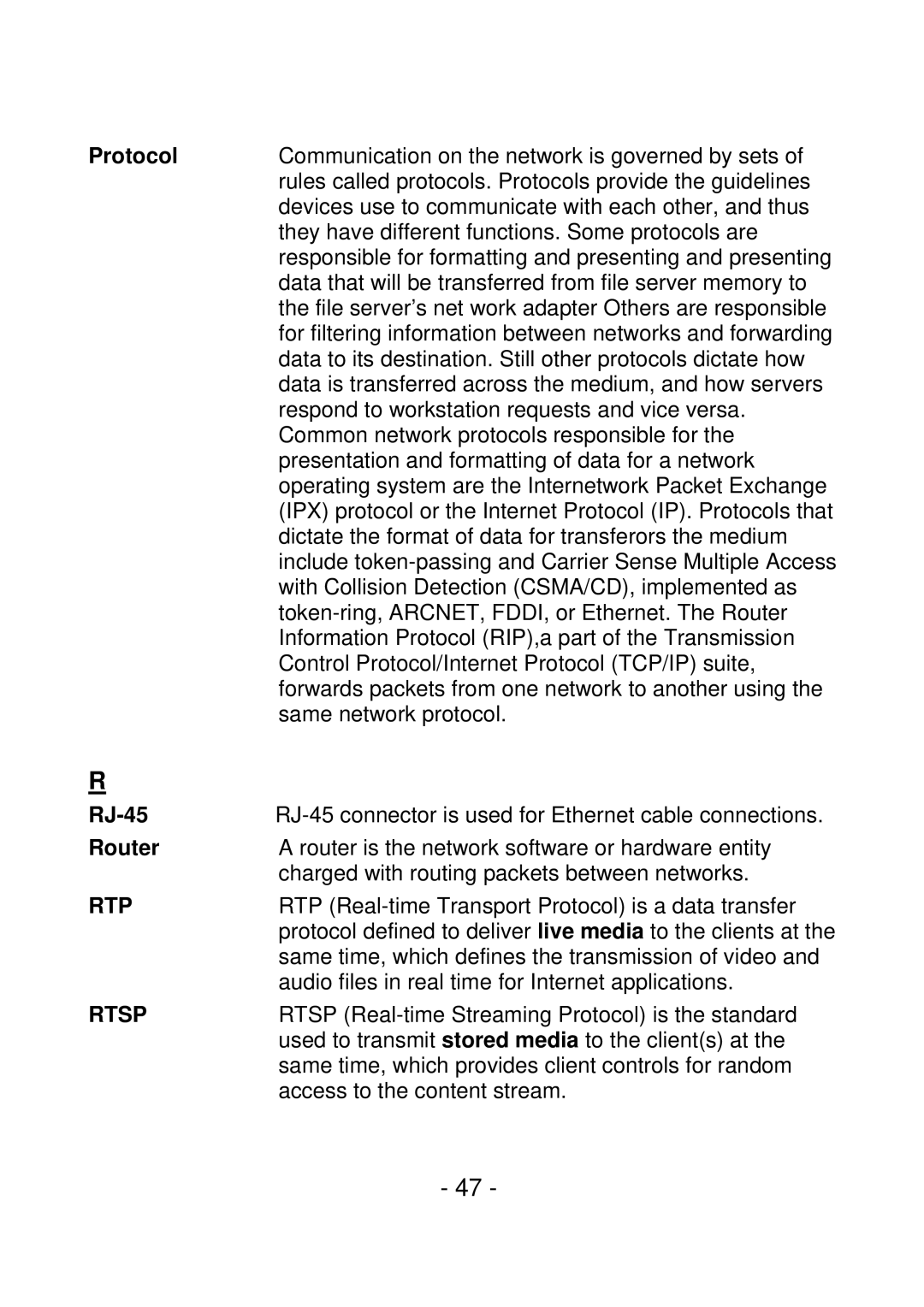Protocol | Communication on the network is governed by sets of |
| rules called protocols. Protocols provide the guidelines |
| devices use to communicate with each other, and thus |
| they have different functions. Some protocols are |
| responsible for formatting and presenting and presenting |
| data that will be transferred from file server memory to |
| the file server’s net work adapter Others are responsible |
| for filtering information between networks and forwarding |
| data to its destination. Still other protocols dictate how |
| data is transferred across the medium, and how servers |
| respond to workstation requests and vice versa. |
| Common network protocols responsible for the |
| presentation and formatting of data for a network |
| operating system are the Internetwork Packet Exchange |
| (IPX) protocol or the Internet Protocol (IP). Protocols that |
| dictate the format of data for transferors the medium |
| include |
| with Collision Detection (CSMA/CD), implemented as |
| |
| Information Protocol (RIP),a part of the Transmission |
| Control Protocol/Internet Protocol (TCP/IP) suite, |
| forwards packets from one network to another using the |
| same network protocol. |
R
| |
Router | A router is the network software or hardware entity |
| charged with routing packets between networks. |
RTP | RTP |
| protocol defined to deliver live media to the clients at the |
| same time, which defines the transmission of video and |
| audio files in real time for Internet applications. |
RTSP | RTSP |
| used to transmit stored media to the client(s) at the |
| same time, which provides client controls for random |
| access to the content stream. |
- 47 -
